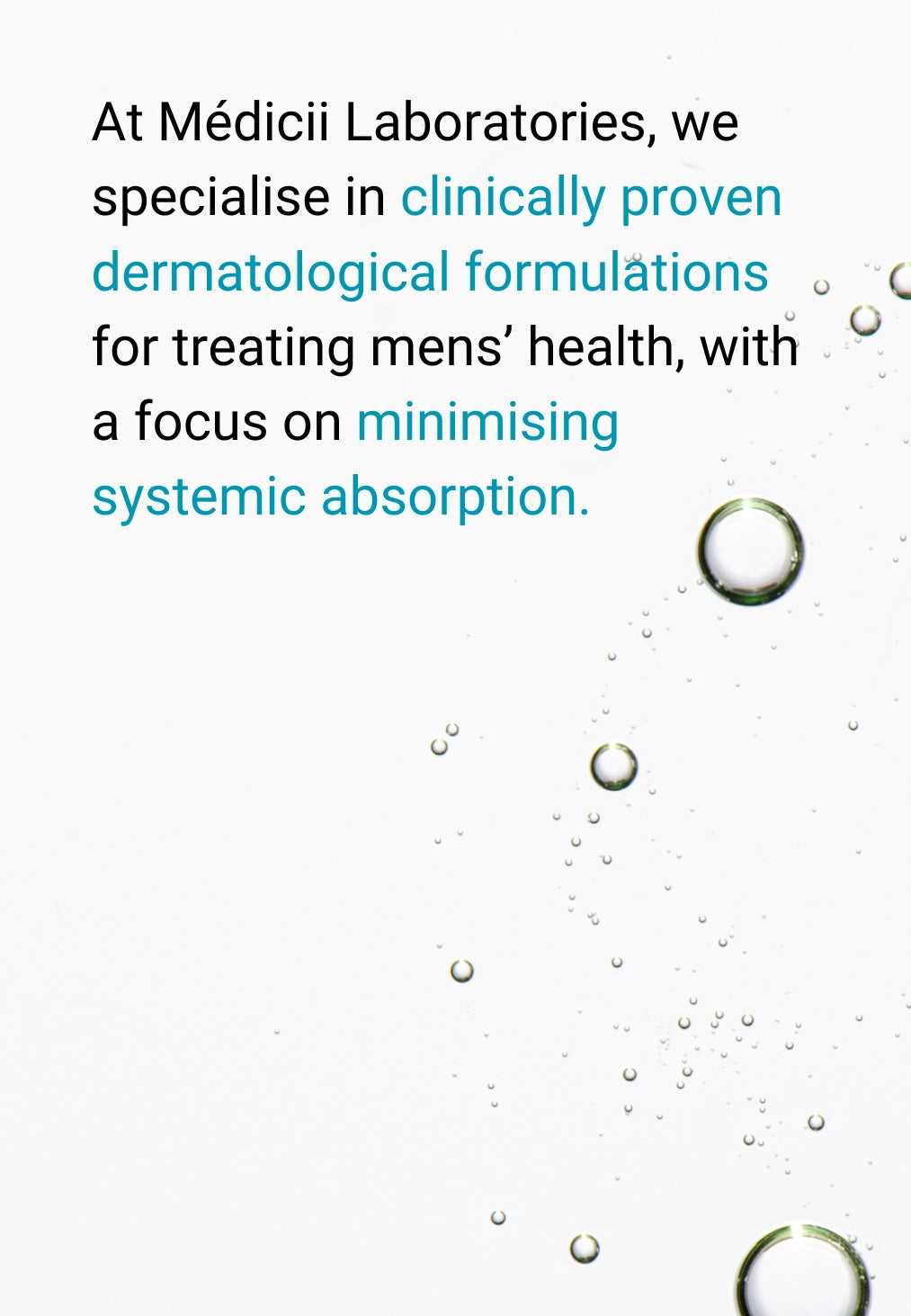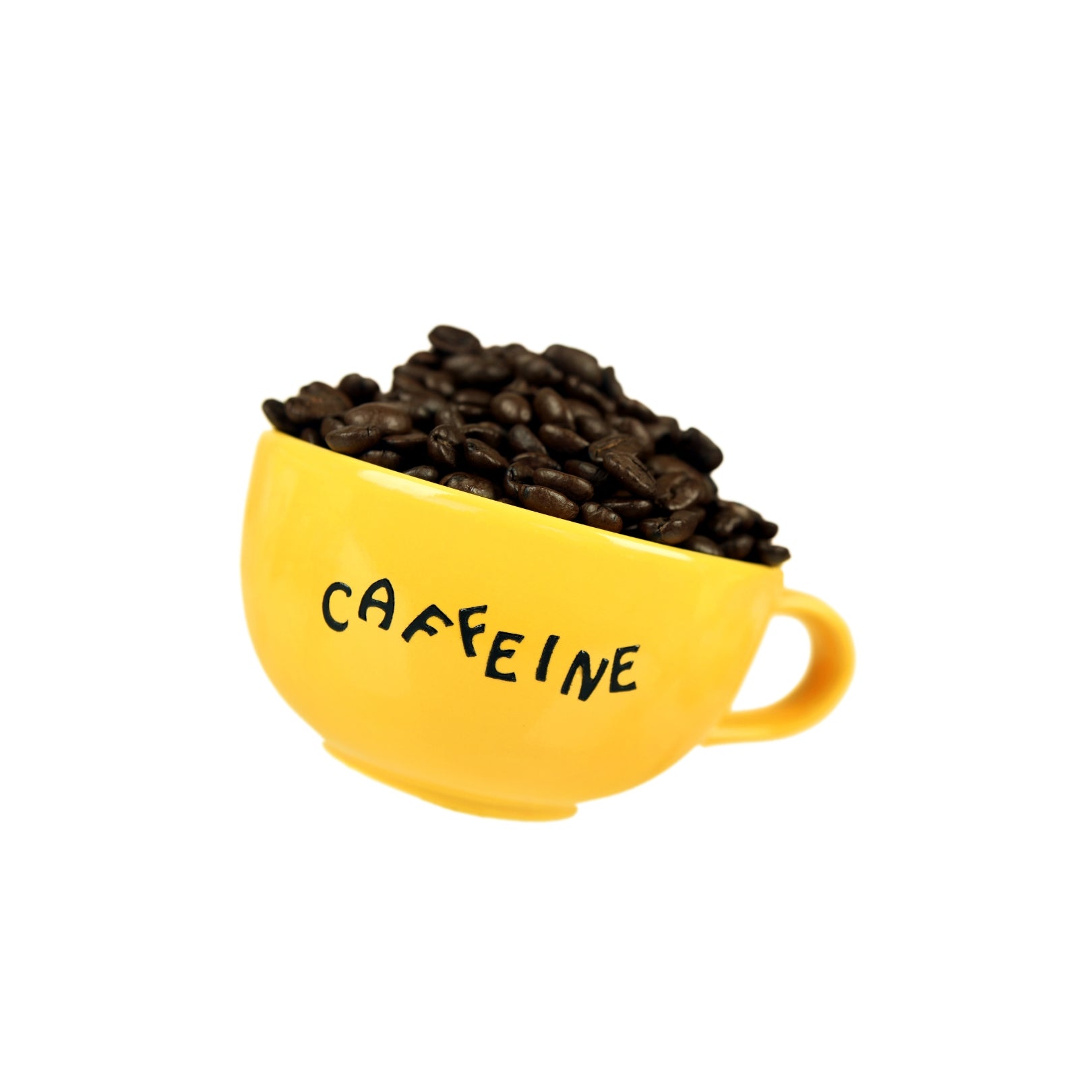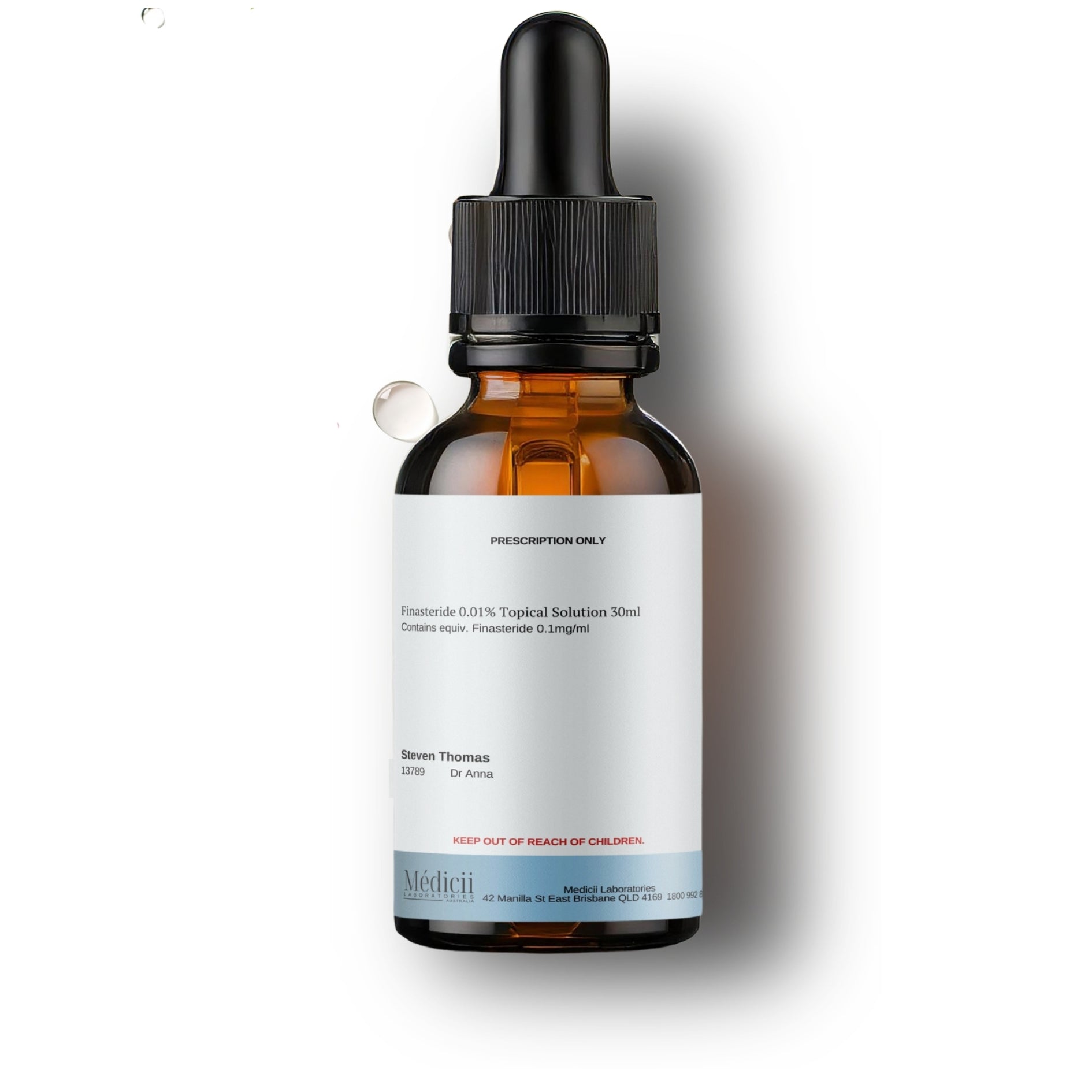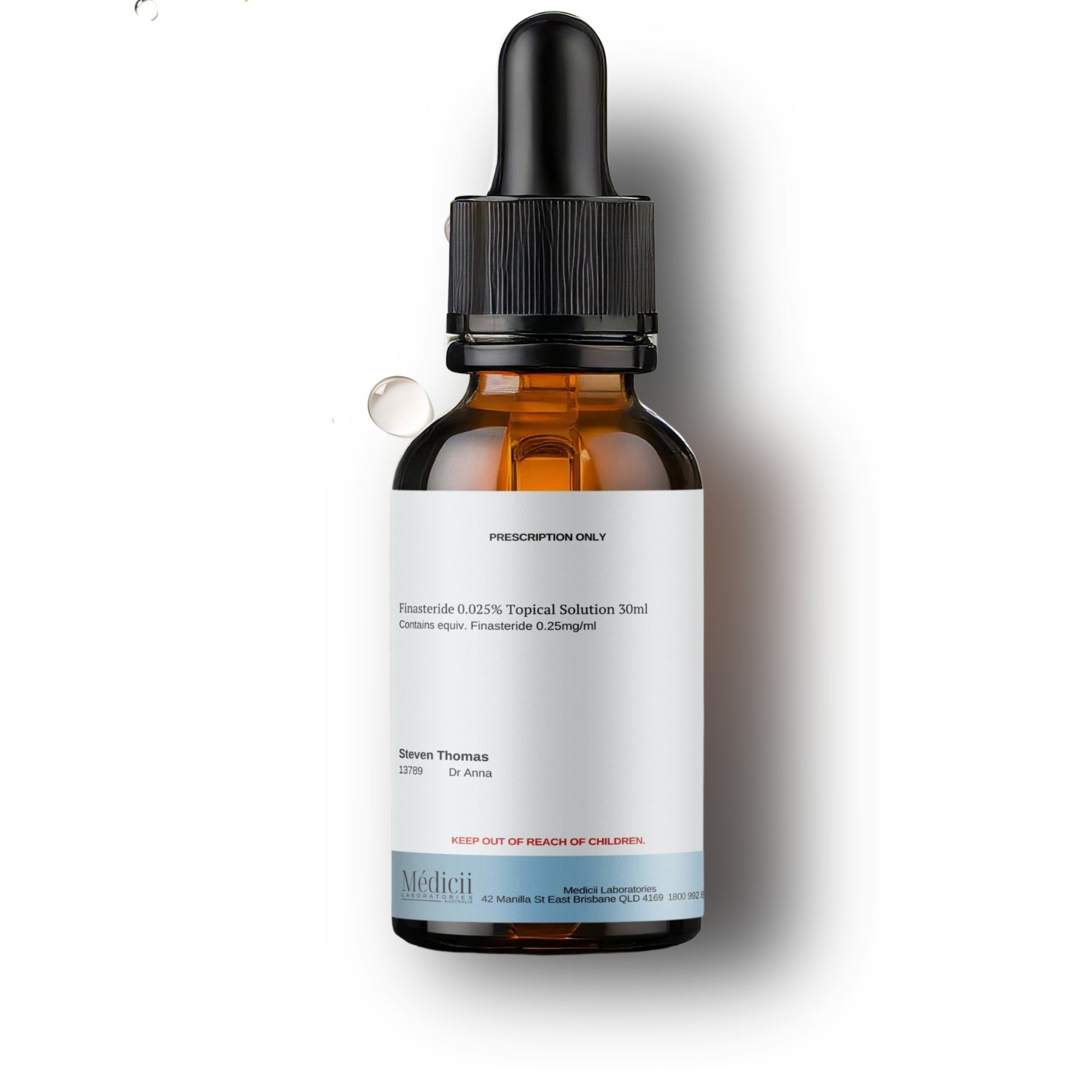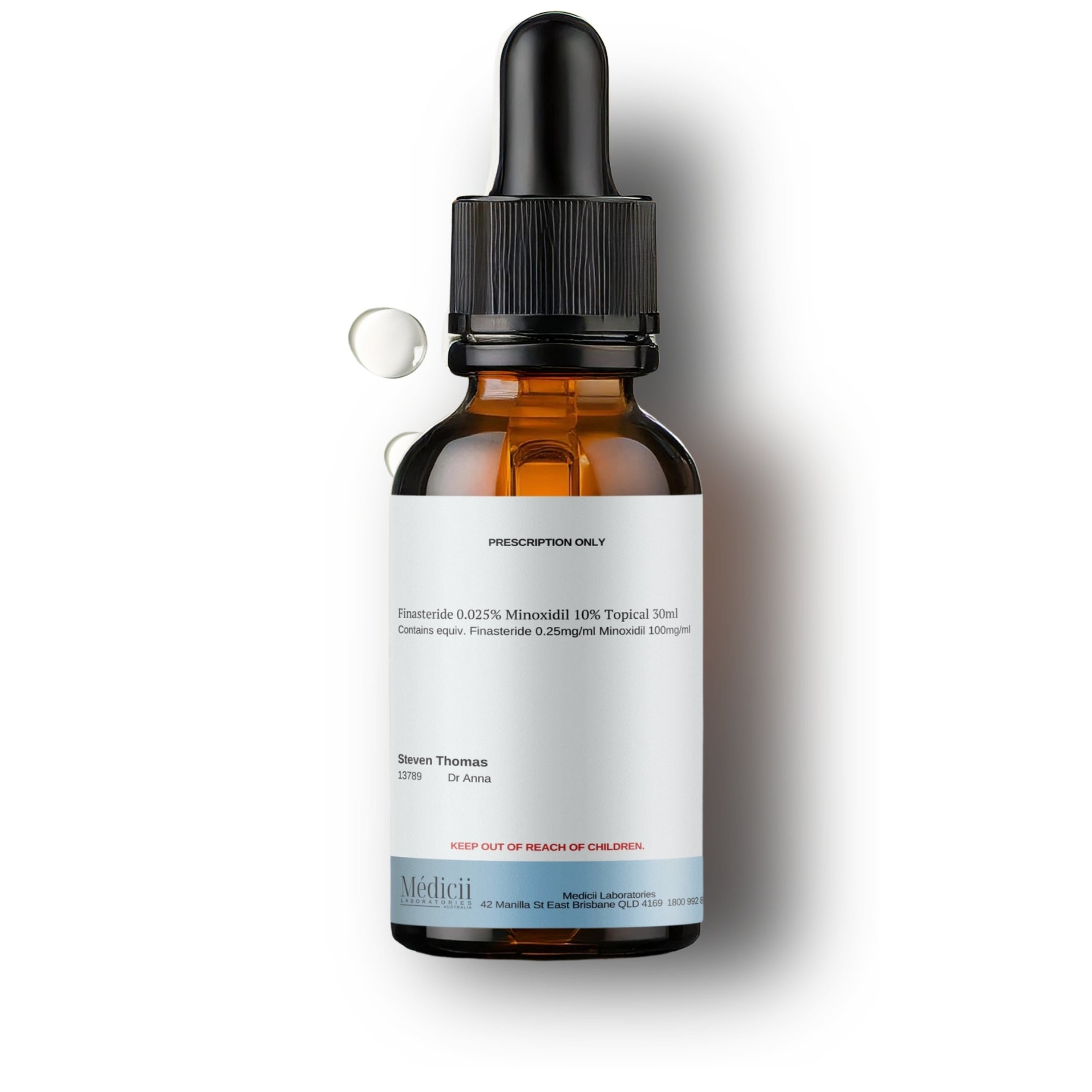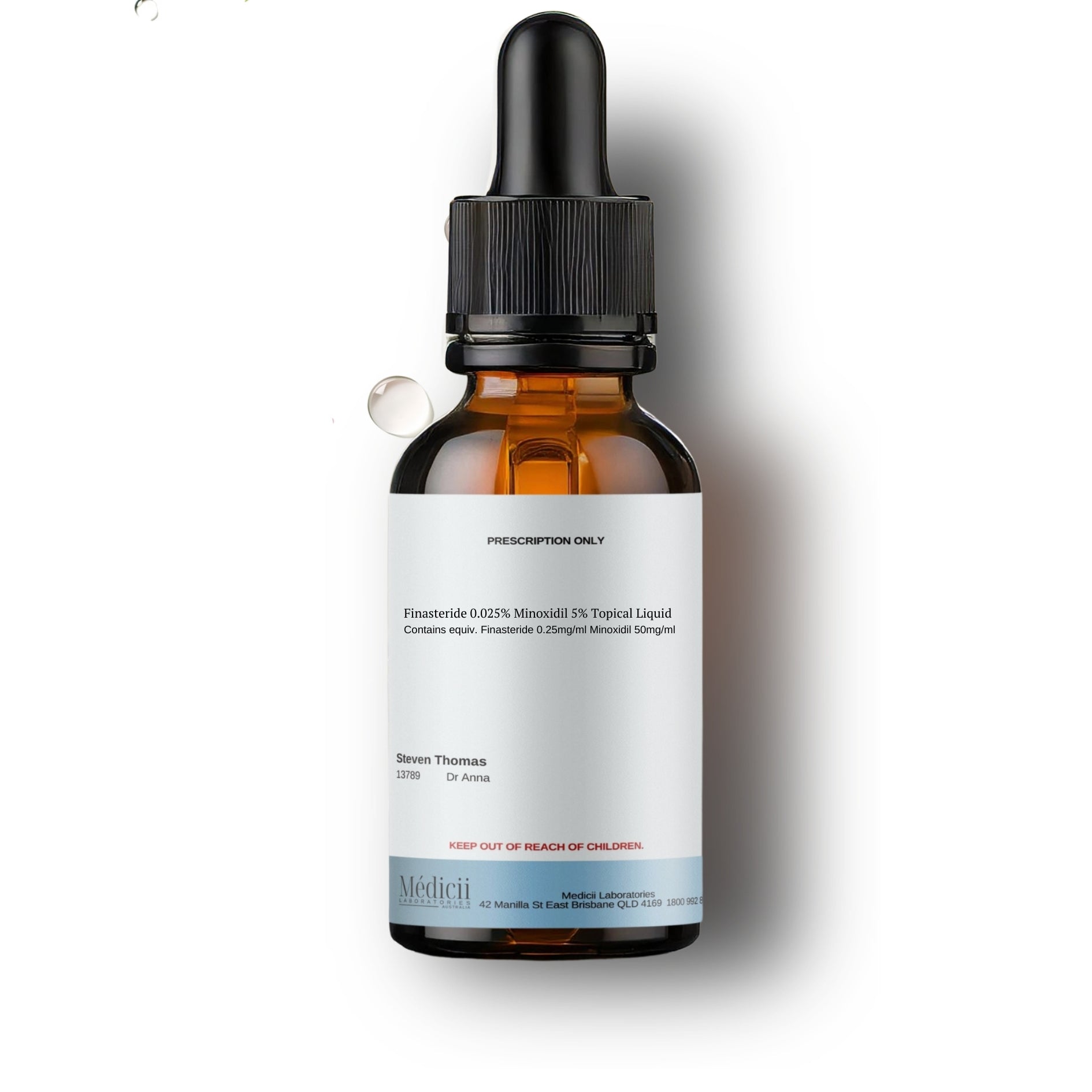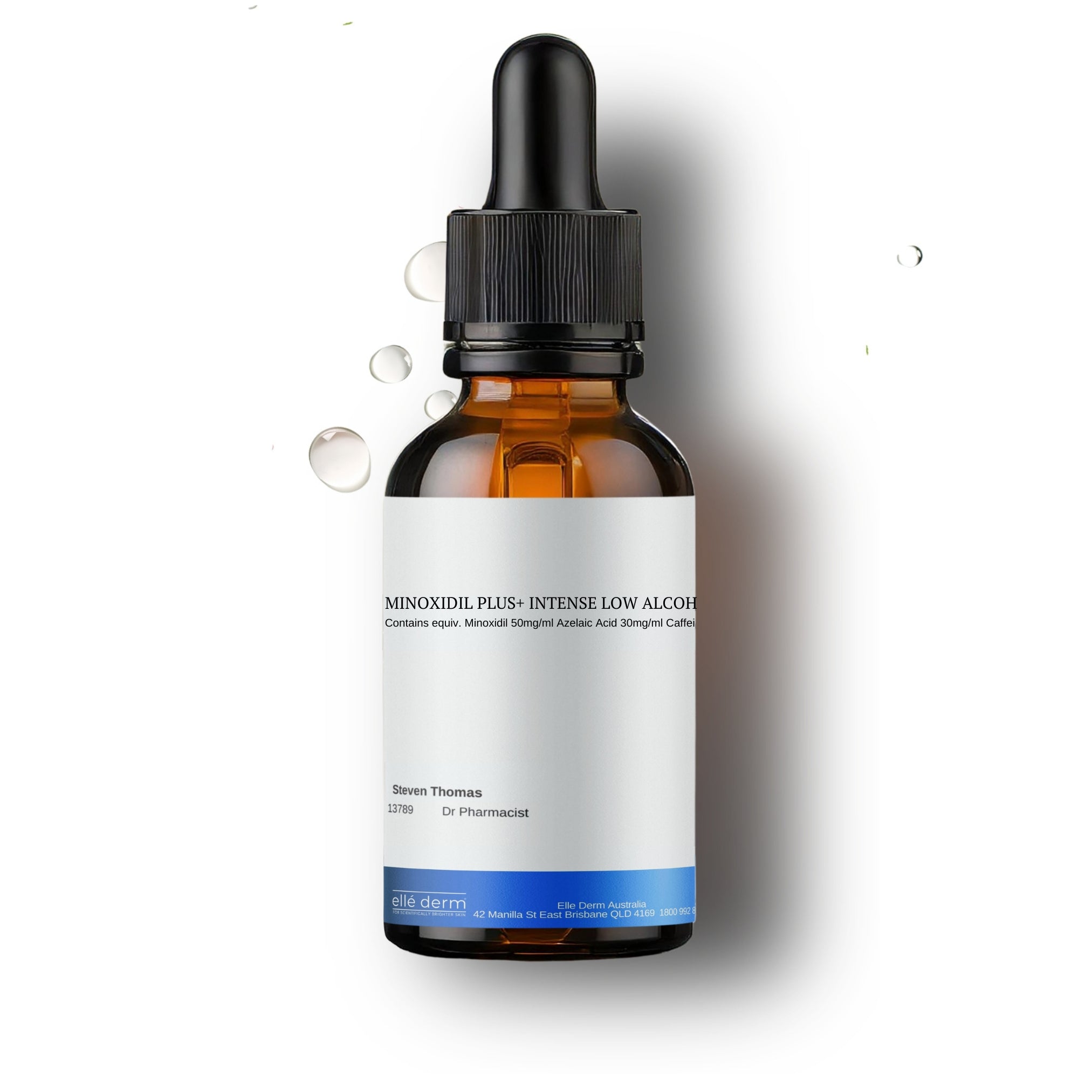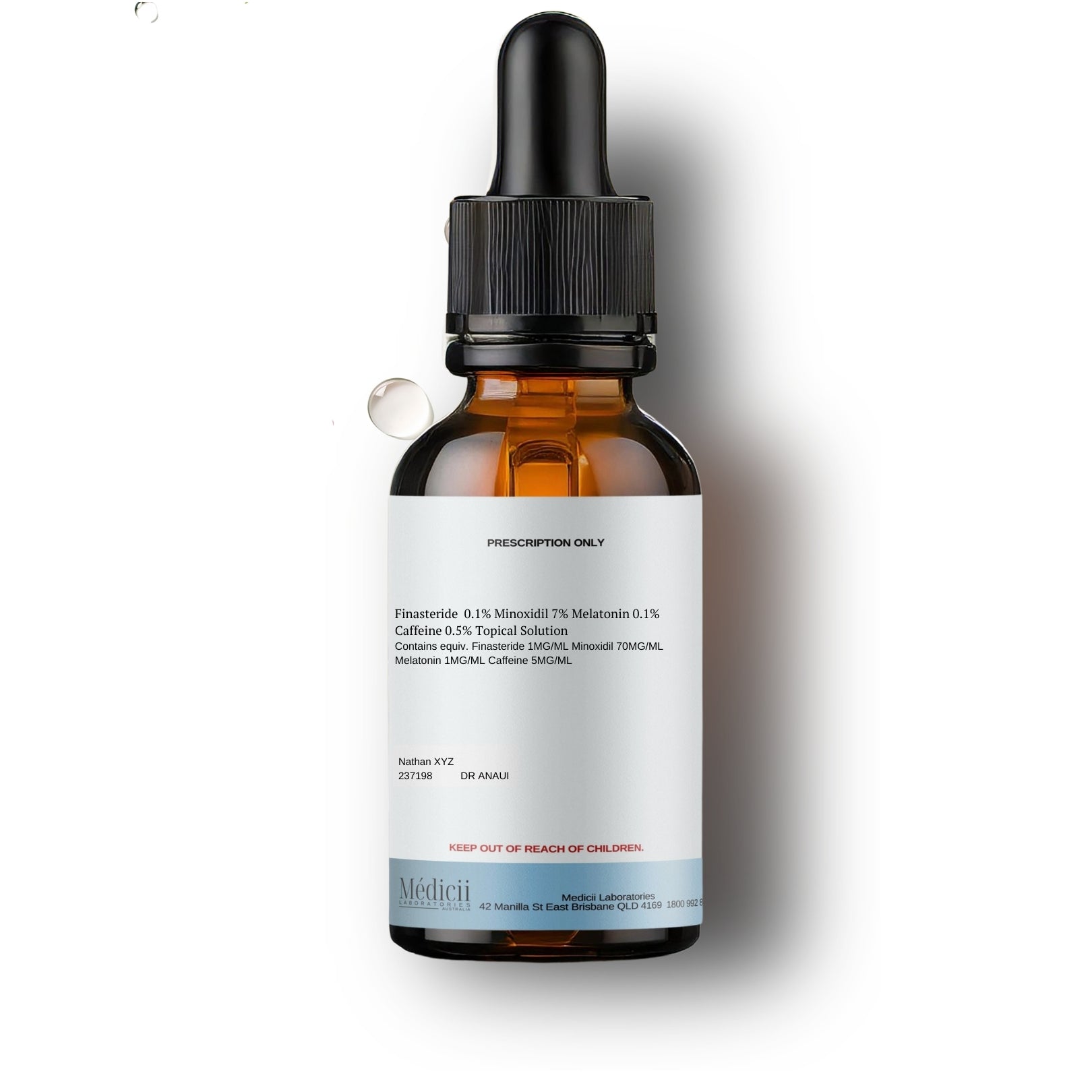Topical Minoxidil side effects
Minoxidil has been the mainstay hair loss treatment for men and women since it was first FDA approved in the 1980s. However, not everyone can tolerate topical minoxidil.
We have teamed up with our pharmacist and formulator to help you identify all the common side effects associated with topical minoxidil and how to fix them.
Why does it itch after I apply minoxidil to my hair?
According to a study published by Shardi in 2023, approx. 20% of men and women will stop using topical minoxidil due to scalp itching. Scalp itching is a common side effect with topical minoxidil for a few reasons:
1) The user has an allergy to propylene glycol, causing the intense itch.
2) Minoxidil is causing the itch (although this is more common with higher doses of minoxidil).
3) The alcohol is causing the skin to become drier over time, causing the scalp to itch.
It is important to identify which ingredient is the allergen to determine if topical minoxidil still remains a suitable option for managing your hair loss.
Should I stop using minoxidil if my scalp is itchy?
It is recommended to stop using topical minoxidil if scalp itching occurs. Prolong itching and scratching can lead to further hair loss and even possible infections.
To identify the causing allergen, we recommend that you switch to a propylene glycol-free and alcohol-free formula. If scalp itching remains after switching to an alcohol-free and propylene glycol-free formula, it is likely the user is allergic to minoxidil itself.
From our experience, users can expect to see an improvement in symptoms within three to four weeks of not being in contact with the allergen.
For users who are suspected to be allergic to minoxidil, an allergy test is recommended to confirm this diagnosis before switching to oral minoxidil.
Why am I getting severe dandruff since starting minoxidil?
Severe dandruff is also known as seborrheic dermatitis. This is commonly caused by propylene glycol (PG), one of the carrier vehicles in the minoxidil solution. The symptoms will usually resolve on its own once the user ceases contact with PG. In rare cases, the use Ketoconazole shampoo for minoxidil induced seborrheic dermatitis is required.
If you experience minoxidil induced seborrheic contact dermatitis, we recommend the very first thing that you do is to wash your hair immediately and see your doctor or pharmacist.
How to tell if minoxidil is working?
The best way to know if minoxidil is working is to stick with the treatment for at least 3-6 months (unless you are experiencing side effects). In the first 3 months, you will go through a shedding phase. After the initial 3 months, the shedding will stop and stabilise, and you will see less hair loss around the house and in the shower.
The results from minoxidil does not peak for at least 12 months with continuous daily use.
How often should I wash my hair while using minoxidil?
Hair washing is recommended at least twice a week to keep the scalp clean. This will help the topical solution absorb better.
How do I know if I am applying minoxidil correctly?
It is recommended to concentrate on the areas that are balding or thinning and massage the solution into the scalp so that the solution can be absorbed into the hair follicles. Never apply the solution directly to the hair shaft and wait for it to dry.
Does tingling mean minoxidil is working?
Tingling is a sign of skin sensitivity. If the tingling sensation is severe, it is recommended that you stop using topical minoxidil and identify the causing allergen.
Tingling can also signal the strength of minoxidil you are using is too high. From our experience, tingling is more likely to be reported when using 7.5% minoxidil and 10% minoxidil.
References:
- Jadeed, B et al (2021). "A Case of Contact Allergic Dermatitis to Topical Minoxidil". J of Medical Science Acad. 2021 Jan 5;13(1):e12510.
- Patel, P et al (2023). Minoxidil Continuing Education Activity. National Library of Medicine. Updated February 2023.

